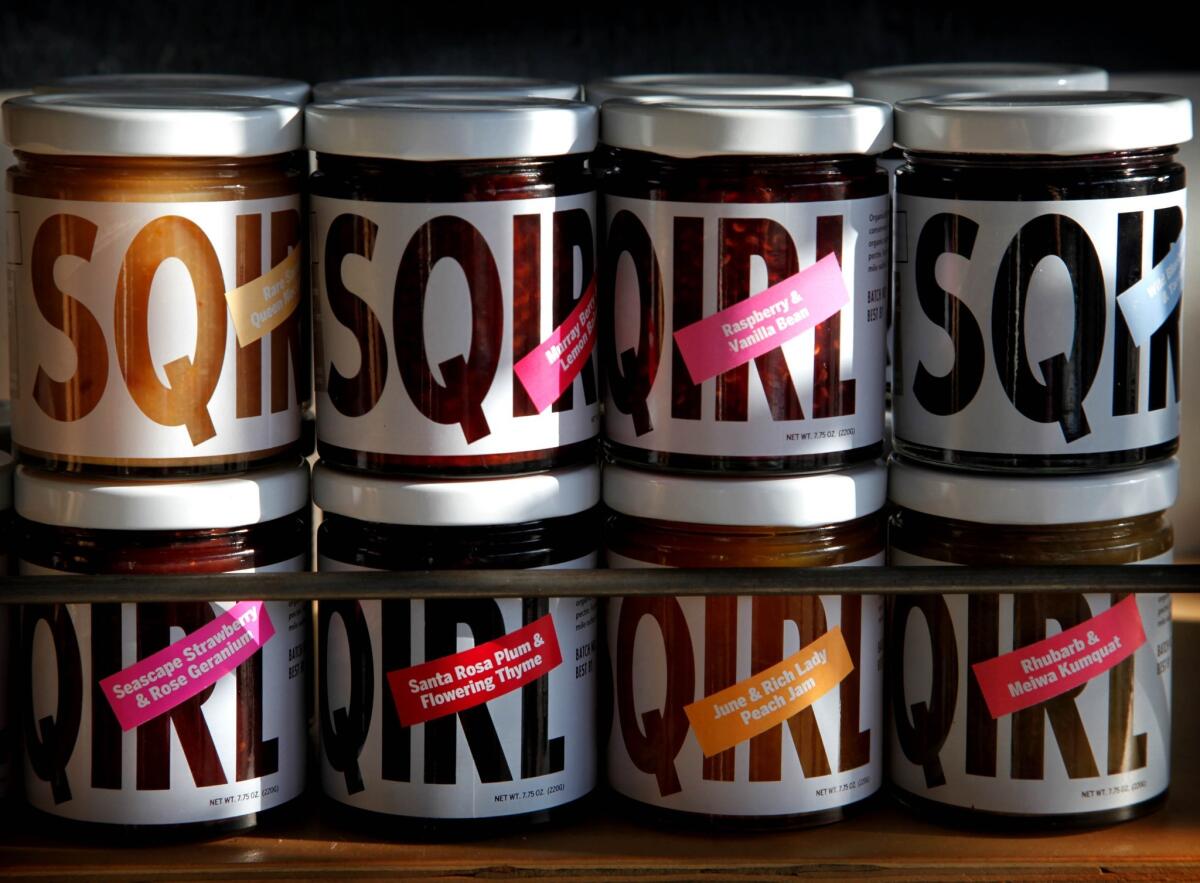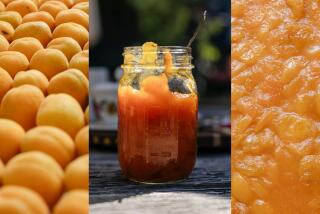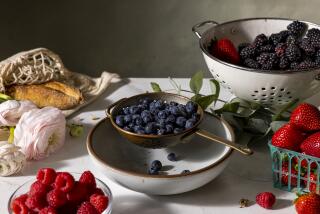Jam session with Jessica Koslow of Sqirl

- Share via
Jessica Koslow is rummaging around in her room-sized walk-in refrigerator at Sqirl, looking for fruit. There are several cases of tiny, intensely flavored Santa Rosa plums from farmer James Burch. Wait, no. How about some of these dry-farmed Blenheim apricots from Mike Cirone of See Canyon? She hoists a case onto her shoulder and hurries to her kitchen. It’s time to make jam.
While home preserving has the reputation of being unforgiving and demanding, watching a master like Koslow, you realize how easy it really is, especially when you start with the the kind of fruit that is flooding the markets right now.
A former pastry chef, Koslow turned her jam-making hobby into a business, then she turned the jam business into a store, turned the store into a coffee shop, turned the coffee shop into a restaurant and now is expanding into the space next door, a gourmet market and wine shop that she will share with her old friend and mentor Lou Amdur.
For now, though, the kitchen at Sqirl is tiny, dominated by a single six-burner stove and a beautifully seasoned hardwood counter. The sign outside says “Toast and Jam,” and it’s hard to believe there’s room for the staff to make much more than that. (Of course they do. There’s a range of breakfast and lunch items.)
Fortunately, it doesn’t take much space to make great jam. A scale, a small plastic food bucket, a much-used copper preserving pan, and Koslow has pretty much everything we need.
Because the apricots are freestone fruits, we don’t even need knives — dig into the seam with your thumb and the fruit splits right open; and don’t forget to work over the bucket to collect the juice.
Koslow works by weight. It is far more accurate, and using percentages lets you scale the recipe up and down, depending on how much fruit you have.
For apricots, she uses 60% of the weight of the fruit in sugar and 2% lemon juice — so every pound of apricots takes about nine ounces of sugar and 1/3 ounce of lemon juice (a little less than 1 tablespoon). Other fruits take different ratios, depending on the amount of pectin, sugar and acidity they contain. Ratios can run as low as 30% sugar for Gravenstein apples, or as high as 70% for Santa Rosa plums.
Everything gets mixed together in the preserving pan until all of the sugar is moistened by the apricot juices, then put over a high flame.
Koslow pulls a half-dozen or so of the apricot pits from the bucket, lines them up on a towel and cracks them with a big rubber mallet. She picks out the meats, toasts them briefly in the oven, then ties them in a cheesecloth turkey roasting bag and puts that in with the cooking fruit to add a slight floral bitterness.
At first there is just a mad bubbling. It’s important to stir constantly, or the sugar will scorch. A long-handled silicone spatula is perfect for this, and a pair of heatproof gloves doesn’t hurt as the mixture spits and spurts (Koslow’s come up past her wrists for even more protection).
Gradually, the fruit softens and the sugar melts into a syrup. The syrup darkens and thickens as the apricots collapse. The mixture feels heavier when you stir.
After about 10 minutes, when you lift the spatula you will see that what once was liquid that flowed off in several points has now become stickier and “sheets” just under the blade.
Just to be certain, Koslow takes the pan off the burner and lets it sit for a minute. Sure enough, the jam starts to jell at the edges almost immediately. Done.
It’s that simple. We’ve captured the very best of early summer in a jar.
More to Read
Eat your way across L.A.
Get our weekly Tasting Notes newsletter for reviews, news and more.
You may occasionally receive promotional content from the Los Angeles Times.











